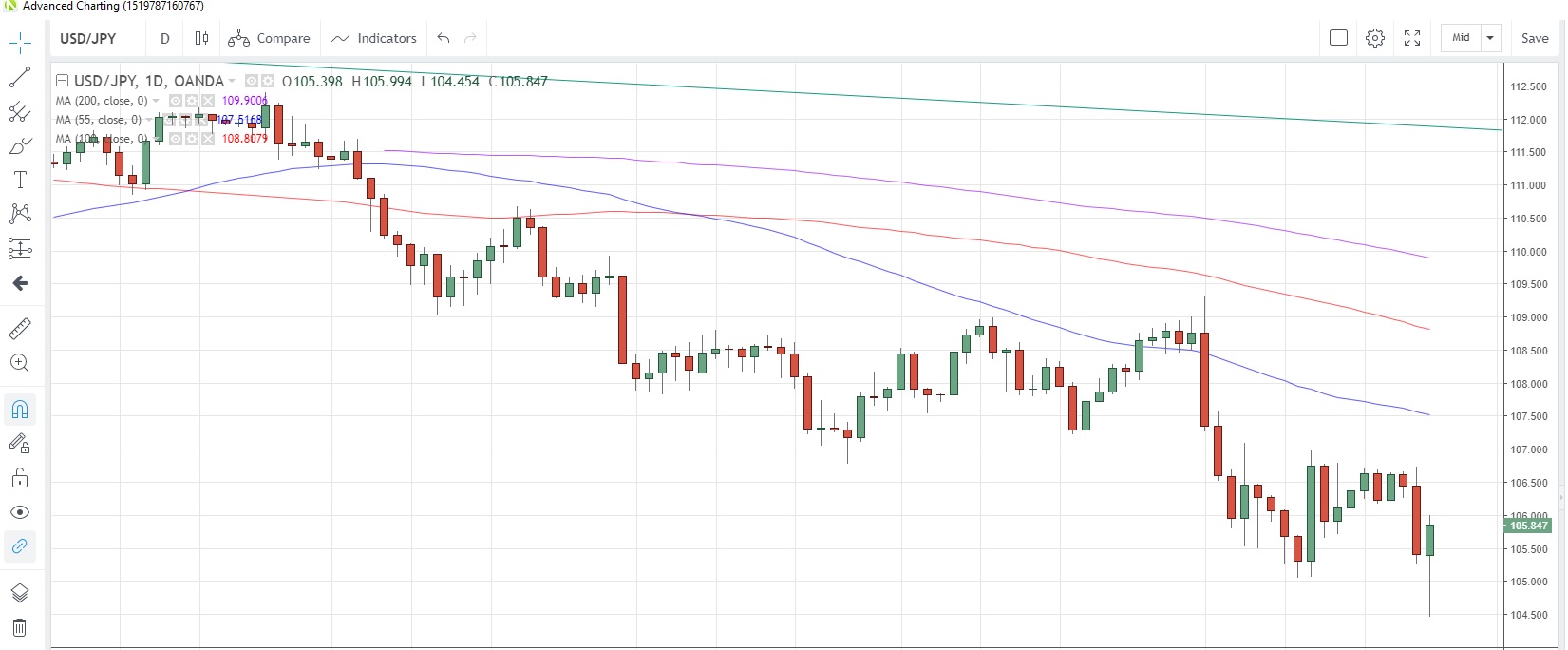Strong equities rebound
Asia was focused on the negative sentiment after Wall Street’s dismal finish on Wall Street last Friday, but that was all reversed once the European session got under way. One of the catalysts was comments from US President Trump at the G7 weekend meeting saying that he hopes that he does not need to consider US tariffs on German car imports.
While the comments are not related to the tit-for-tat US-China that evolved over the weekend, aside comments saying that the US appreciates the positive comments from China about the latest developments were well received and the prospect of continuing talks going forward was seen as a positive step.
Having risen to the highest level in almost three years, USD/JPY then reversed track and is now down 0.4% versus the US dollar at 105.82
USD/JPY Daily Chart

China still willing to sit at the negotiating table
Chinese Press were reporting this morning that China’s Vice Premier Liu He said that China is still willing to resolve the current trade dispute with the US through “calm negotiations”. He added that China opposes the escalation but noted that China still has sufficient tools to ensure growth. It would appear that China views the latest deterioration as more of a desperation play by Trump and they are willing to “stick it out” for a solution that is fairer for both sides.
This morning’s USD/Yuan fixing was a surprisingly stable affair when you consider the developments at the end of last week. The mid-rate was set at 7.0570 per US dollar, only marginally different from Friday’s 7.0572. Trading took USD/CNH to a new high, according to OANDA data going back to 2011, with the FX pair now at 7.1511.
Slow start on the data front
With last week’s big lead up to Powell’s Jackson Hole speech, the week is starting off rather mundanely. The events on the calendar include German IFO surveys for August, with the forward-looking expectations index seen sliding to 91.5 from 92.2, which would be the lowest reading in a decade, while the business climate is expected to drop to 95.1 from 95.7.
The US calendar features the Chicago Fed activity index for July and durable goods orders for the same month. Orders are expected to rise 1.1%, a slower pace than June’s 1.9% increase.
